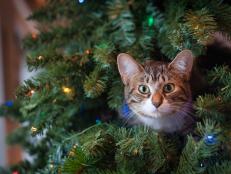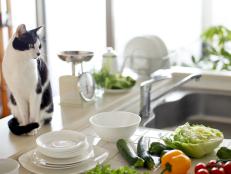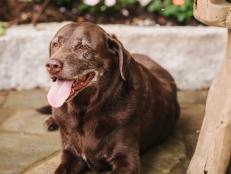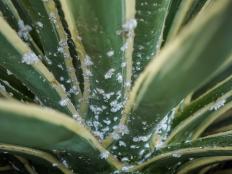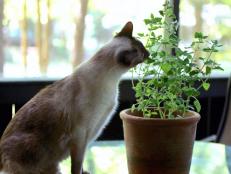7 Tricks for Keeping Your Cat Out of Houseplants
Here's how indoor greenery and pets can share space at your place.

Those of us with houseplants and house pets know that combining the two is tricky, occasionally dangerous and almost always messy. Indoor cats in particular — we speak from long experience here — have a tendency to assign themselves amateur gardening duty out of boredom, curiosity or (we're speculating) a need to follow secret instructions from their feline overlords.
For safety's sake, toxic plants and flowers should never come near your pets (the ASPCA maintains a list of safe and unsafe varieties here, and it's worth your while to double-check any bouquet or green-market baby you plan on bringing home).
That said, we've picked up some strategies for peaceful coexistence. With a bit of fancy footwork on your part, Mister Whiskers might not even realize he's living in a greenhouse.
Place Them Beneath a Cloche
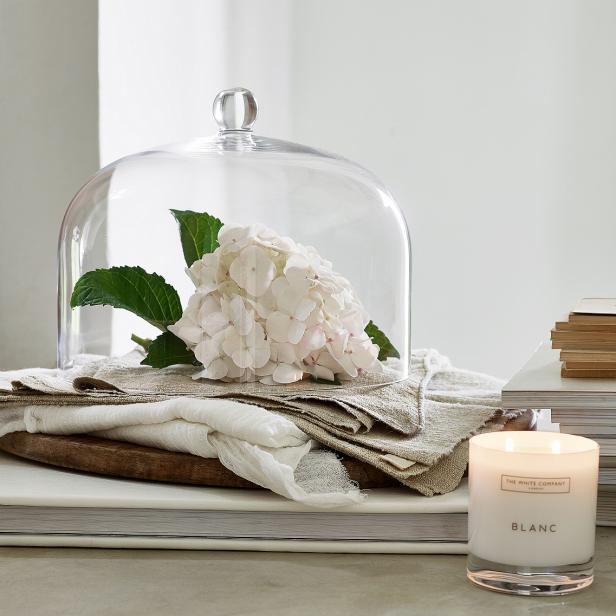
The blooms, that is — not the cat. Shapely glass domes are the pet-friendliest trend to hit tabletops in recent memory: You get to display the most delicate flowers you can find, and in the absence of opposable thumbs, Fluffy will have a hell of a time getting her paws on them. BUY IT: The White Company, $65
Invest in Hanging Planters

Another helpful trend: Sleek, modern vessels that keep your greenery out of harm's way. (Traditional macramé hangings could work as well, though if those dangly tassels catch your cat's eye, don't say we didn't warn you.) Note that while suspended pots keep plants themselves away from your pets, leaves and flowers can still end up on the floor — so it's important to stick to non-toxic varieties here, too. BUY IT: West Elm, $59
Mount a Staghorn Fern
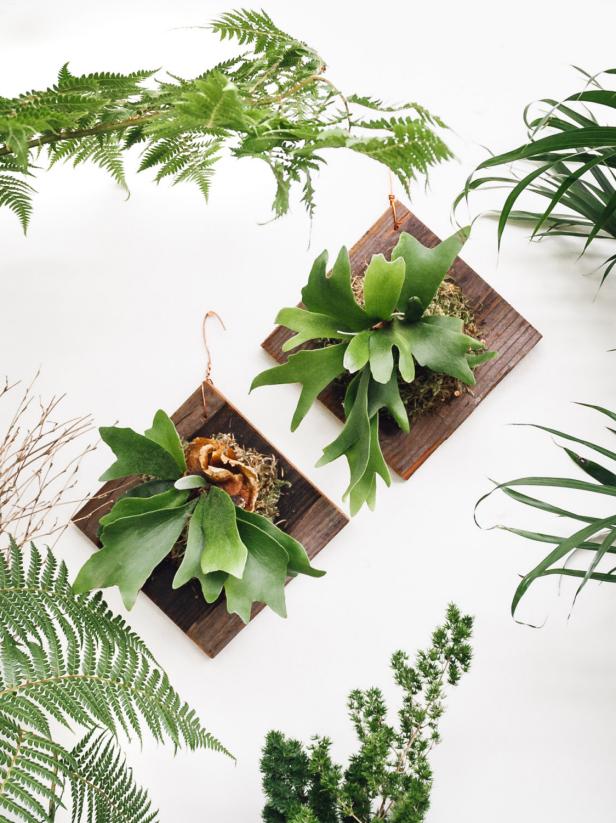
The stately, sculptural staghorn is an apartment gardener's best friend, since it's more than happy to spend its time on a sunny patch of wall and requires minimal care (simply take it down once a week, give it a 20-minute soak in a pot of water, and return it to the wall once it's drained). Best of all, fallen fronds are A-OK for critters to investigate. BUY IT: Pistils Nursery, $46 and up
Opt for Echeveria
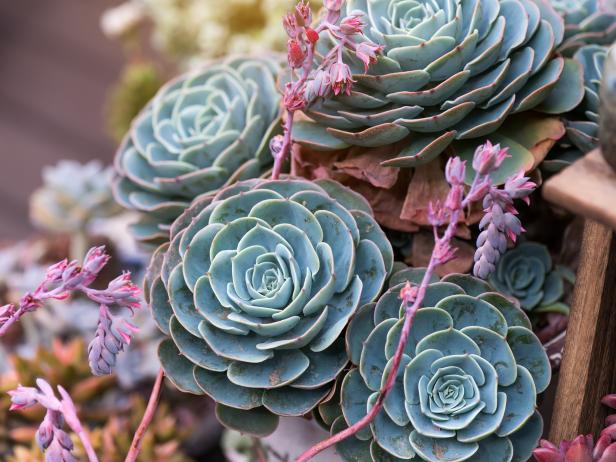
kynny/iStock Photo
Echeveria is another popular choice for homeowners with pets, since its elegant little rosettes are also safe to nibble. (That's not the case for all succulents: Jade and aloe plants, for example, are both toxic.) Furthermore, its low-and-slow-growing leaves are unlikely to attract feline attention in the first place.
If your four-legged friend does take a shine to your arrangement, try spritzing it with a taste deterrent like Grannick's Bitter Apple. The pet-safe spray gives plants a yuck factor without inhibiting their growth (an unfortunate potential side effect of acidic applications like diluted vinegar or citrus juice).
Climb the Wall

Burke Decor
Lightweight, air-scrubbing tillandsia can hang out on vertical surfaces with little more to support them than, well, air. Rooted plants and thirsty cuttings, on the other hand, will appreciate pockets like these water-tight, galvanized-iron circular planters. BUY IT: Burke Decor, $23 and up
Get Prickly
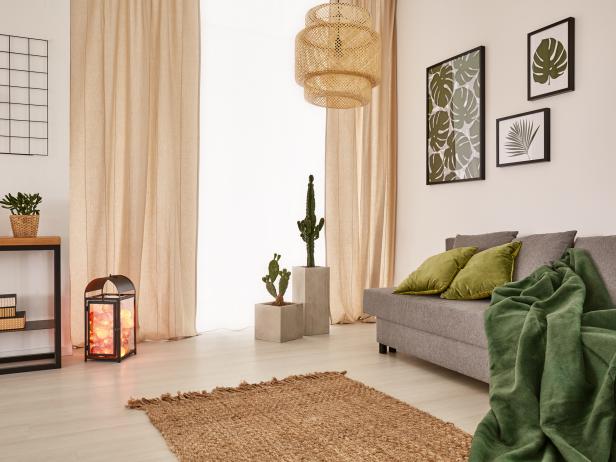
KatarzynaBialasiewicz/iStock Photo
When your heart is set on keeping plants in harm's way and your cat's heart is set on treating them like his or her very own salad bar, it's time to call in varieties that can take care of themselves. A spiky, rotund barrel cactus, for example, is technically safe but almost impossible to eat. The same goes for tall, dramatic prickly pears — that is, tree cacti of the Opuntia species.
Try a Terrarium
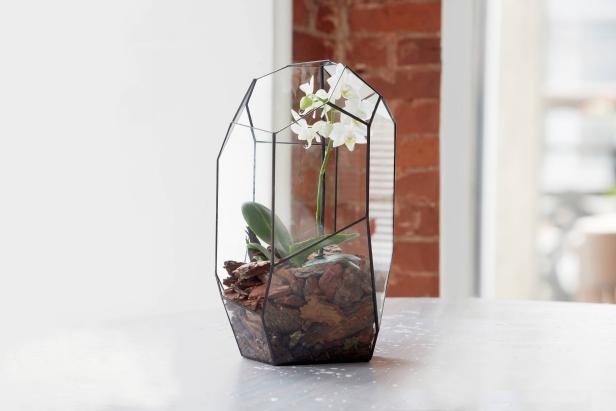
Bulbous blown-glass varieties that open from the side are tricky to plant, but once you've got your blooms in place, they're safe from questing kitties. A faceted piece like this one, in turn, can be turned to face the wall. If you're interested in an orchid, know that while many varieties are toxic to cats, the easy-to-grow phalaenopsis — or moth orchid — is just fine, provided that you stick to non-toxic, organic compost or mulch. BUY IT: Elena Zaycman via Etsy, $125






